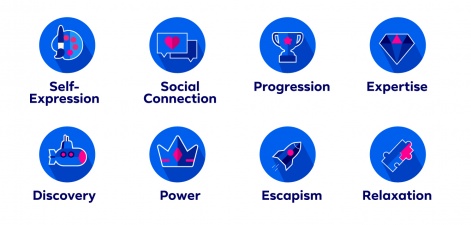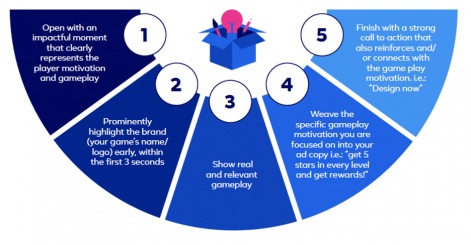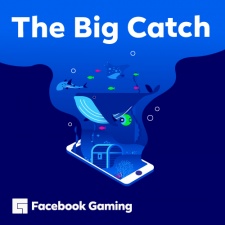When it comes to games app advertising, user acquisition and audience expansion are key to continued growth.
But knowing where to begin building your strategy around this can be tricky.
COVID-19 has also brought a wealth of new and lapsed gamers into the fold, with research showing that 86% of internet users now play mobile games, and 80% of self-described “non-gamers” actually play games on their phones (1).
These gaming audiences are not only large, but diverse.
Many games advertisers face the challenge of attracting new players in an already oversaturated market, vying for the attention of the same audiences.
This can make it harder to achieve conversions, and see meaningful growth.
Similarly, business-as-usual ad creative may not be varied enough to drive players to download. While disruptions in the advertising landscape can make personalization more difficult.
By experimenting with different ad creatives based on these motivations, you can expand the pool where you’re fishing for new players.
So expanding beyond this overfished pond becomes critical. One solution is to tap into gamer motivations with motivation-led advertising.
Unlock potential with the Big Catch
In 2020, Facebook Gaming collaborated with 16 global gaming advertisers to build the Big Catch – a creative advertising framework based on player motivations.
They discovered that by experimenting with different ad creatives based on these motivations, you can expand the pool where you’re fishing for new players.
In 100% of tests, this approach was found to be effective at converting different players, while attracting and converting higher-value audiences (2).
Big Catch digital ad creatives also had 26% higher Ads Quality Ranking than control creatives (3), meaning ads performed better in the auction and saw greater distribution at a reasonable cost.
It all starts with eight player motivations which Facebook Gaming pinpointed in their global research.
Common Player Motivations
The following eight player motivations cover most types of players and game genres. While they aren’t the only ones, they offer a robust starting point to guide you towards what works for your game.

Looking at some of these in more detail:
Progression
Many players take pride in building, managing and improving things in the games they play. They feel a sense of accomplishment in building and completing. Highlighting these features in your ad creative can help draw players who are motivated by progression.
These are the parts of your game that involve building cities, farms or villages; or where the character evolves while seeking out new challenges, or exploring new maps and journeys.
Take this Solitaire Grand Harvest ad creative as an example. The animation opens on a level being completed, and immediately jumps to a map showing the player progressing through the levels, while using phrases like “Start your Solitaire journey” to further allude to progression.
Expertise
When it comes to expertise, players under this motivation want to do something exceptionally well. While it’s similar to progression, it’s not necessarily about winning, but mastering every facet of a game.
Gameplay that focuses on overcoming challenges, solving puzzles, or excelling in speed, accuracy and movement all speak to this motivation.
This World of Tanks creative shows this by leading with a gameplay demo, and almost challenging the viewer with the phrase “Easy to learn… Difficult to master”. It speaks directly to players who are driven by the need to master the game.
Social Connection
Some gamers want to make new friends, or connect with existing ones. So gameplay that involve other people can be a powerful draw for them. This could be clans, teams, 1x1, team x team, competition or collaboration. Different genres have different takes on social connection, but it’s about clearly connecting the gameplay to the motivation.
This Hero Wars creative highlights this from the get-go by asking the player “Alone?” and using actionable phrases like “Share knowledge”, all while showing gameplay that involves working together as a team to defeat a common enemy.
By considering the social elements of your game when building ad creative, you could reach audiences who are looking to connect.
What to consider when creating your creative
As these ad creatives show, there are a number of ways to frame your game to highlight how different features speak to different player motivations.
Your game may fall into a number of these equally, while some may be stronger than others. So to help you get started, here are some guidelines and best practices to help you attract and acquire more players.
The Big Catch playbook digs deeper into each of these steps and helpful tips for making the strongest digital ads possible:

This innovative new solution for game advertising will help you to significantly expand your digital advertising reach and impact.
Gaming companies of any size can benefit from the Big Catch advertising approach. It’s an ongoing process of learning what works and why, and incorporating these learnings into your everyday advertising methods.
To create your own framework unique to your game, get our free-to-download, in-depth Big Catch Playbook and learn more about:
- Testing and optimizing ads
- Key considerations
- Success stories
- Accessing expert regional partners to help you bring this to life
Sources
1. Source: GlobalWebIndex Q3 2018 Base: 113,392 Internet Users Aged 16-64
2. Source: Chi-squared test of 16 Gaming A/B tests
3. Source: Creative Shop analysis of ads quality score, new vs. BAU creatives, 18 gaming AB tests.





















